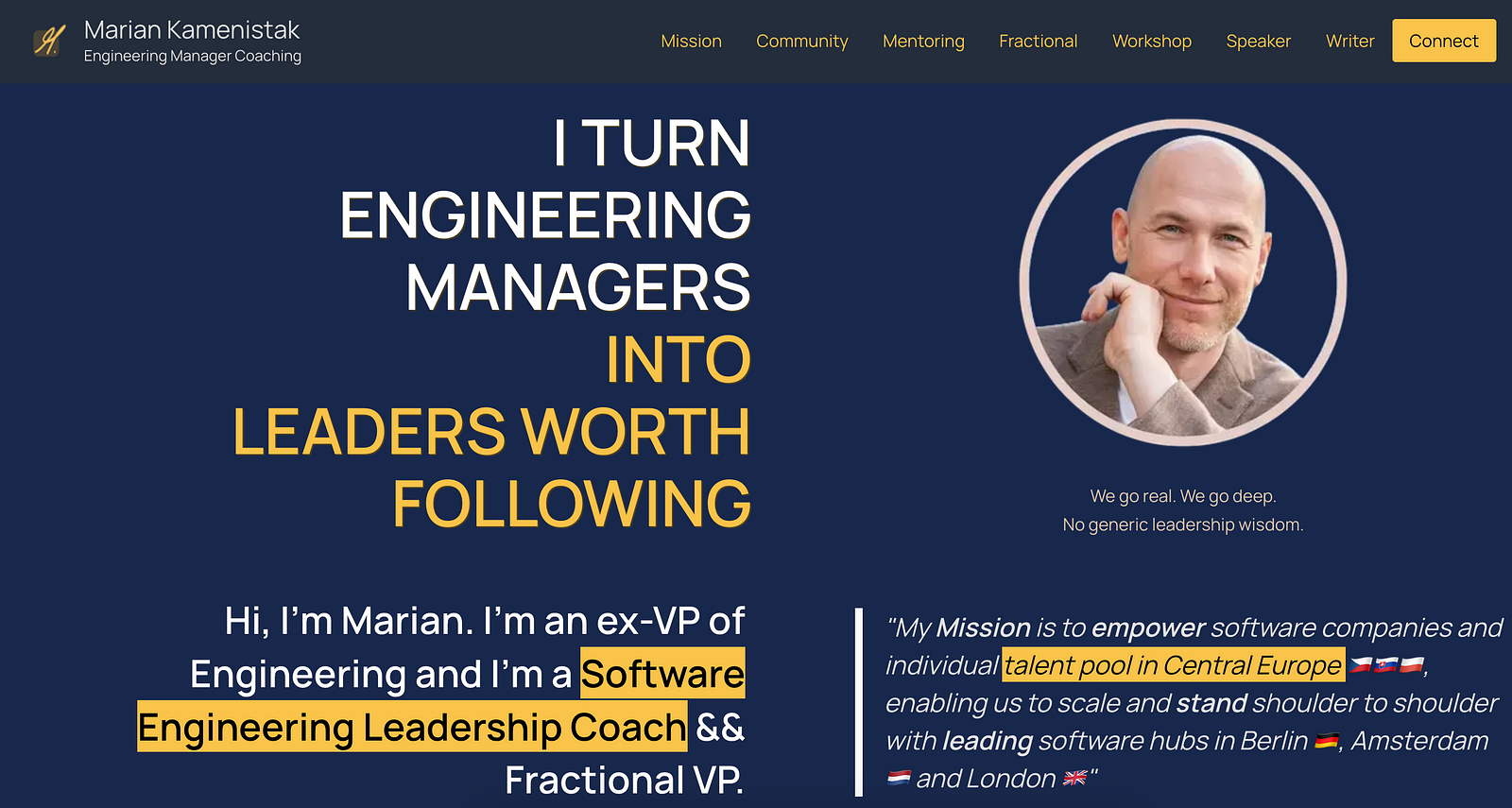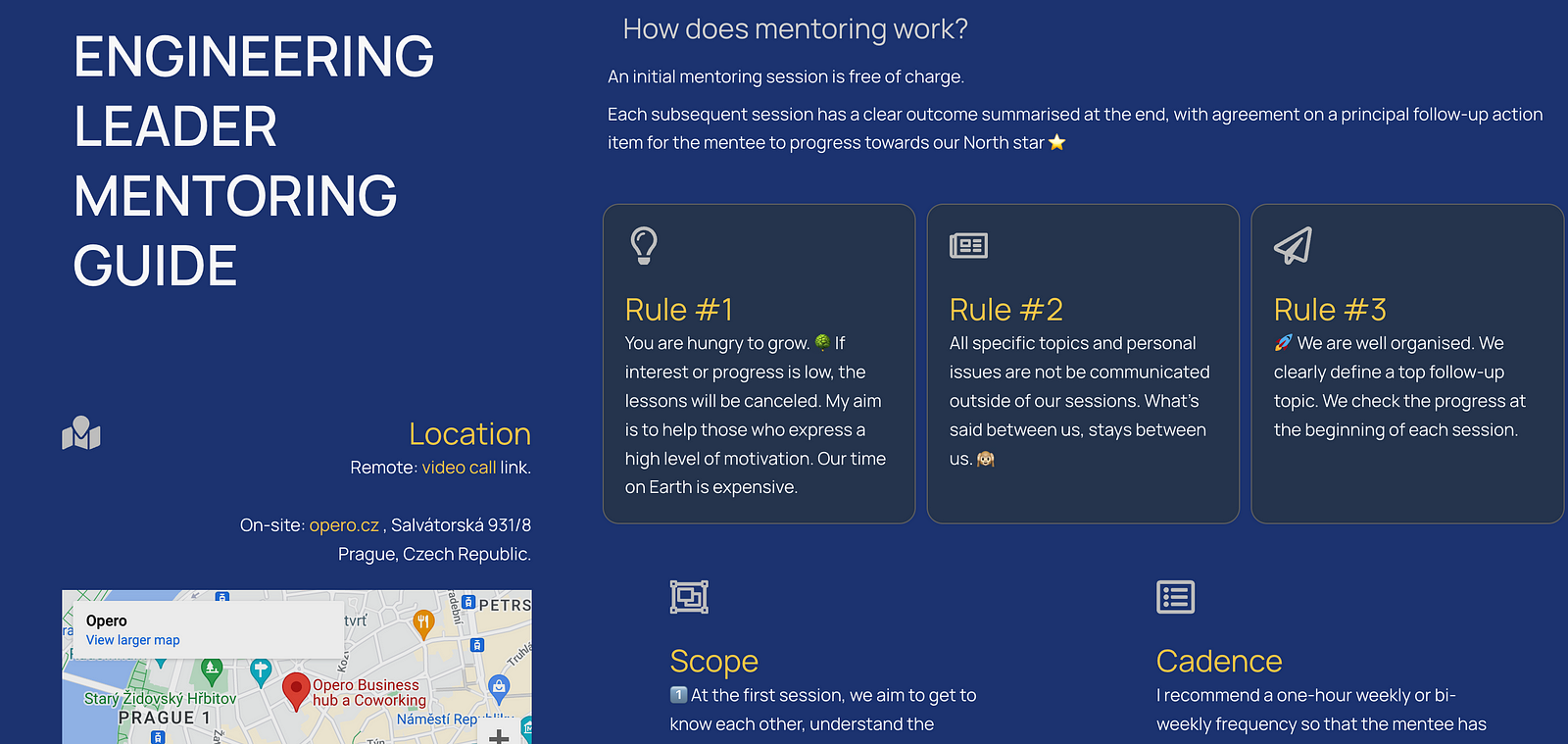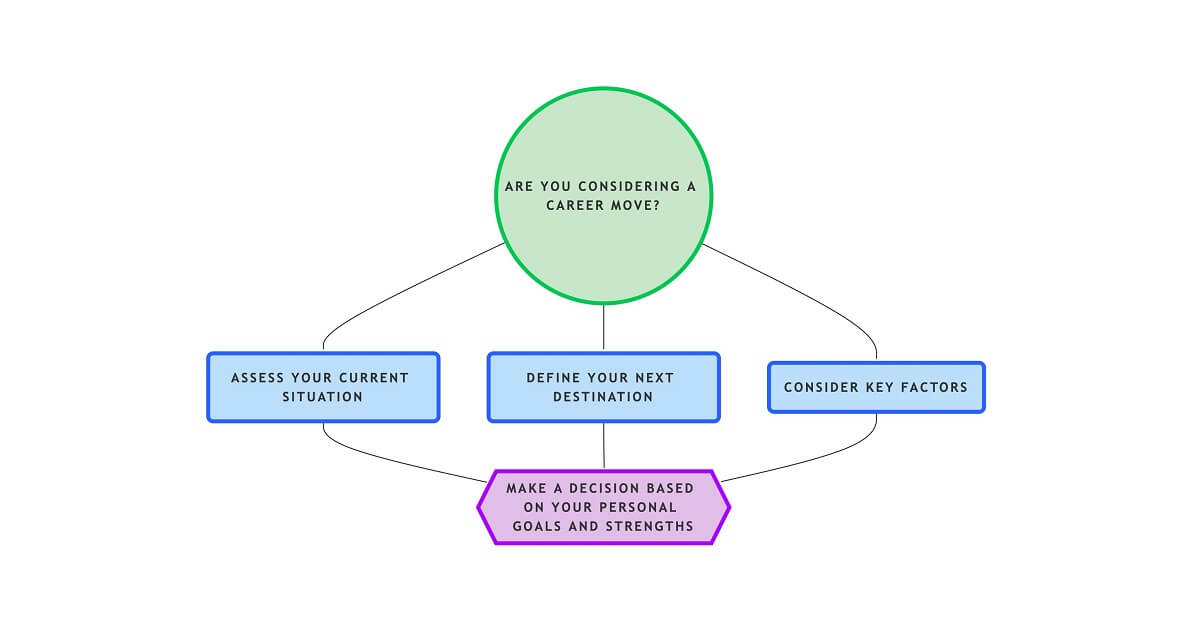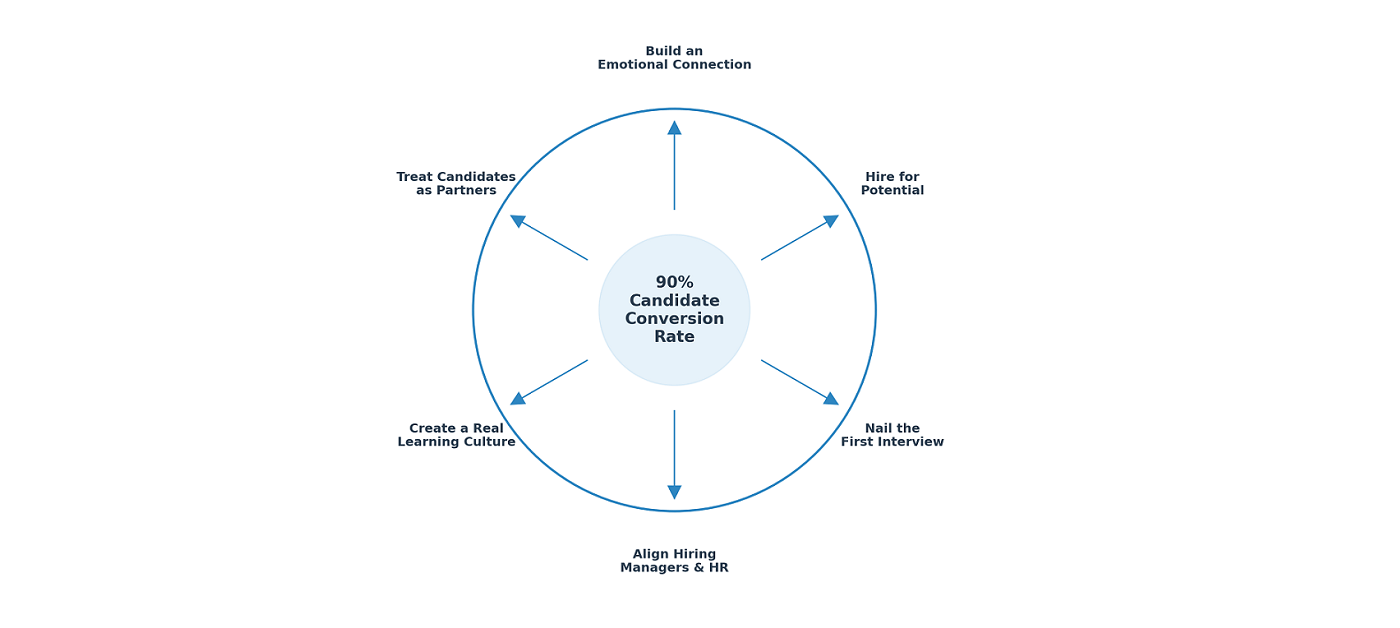92% of the time, I mentor software engineering managers.Currently, I’m guiding two extra mentees with a different mission: They want to follow my path as a solopreneur.
Together, we’re exploring how to build a solo venture, reaching over 300 billable mentoring sessions in one year.
I am working with them to establish their own successful ventures. Our definition of success is crystal clear: We aim to pave the path toward acquiring 30+ clients within six months.
In this post, I’ll walk you through the 10 key steps I’m taking with them to make it happen, offering insights for anyone considering the leap into solopreneurship.
Each step corresponds to a one-hour mentoring session where we deep dive into the specific topic.
Step 1: Your niche
Ask yourself: Why am I venturing into solopreneurship? What’s my mission? It’s essential to have a clear understanding of your motivations and how they align with your long-term goals.
Health check: When mentoring someone on this path, I do a health check to ensure the business model is worth the investment, they’re a good fit, and their passion and skill set align with the demands of solopreneurship.
If there is no passion for their mission, the goal is to copy someone else’s idea, or money is the main motivator, it’s a no-go.
Step 2: Your audience size
When pinpointing your niche, you want to get the balance right. If it’s too broad, you risk being overlooked; too narrow, your potential client pool shrinks.
A common trend I see is people aspiring to become generic ‘life coaches’, which is a classic case of being too broad.
TIP: Identify a niche that aligns with your expertise and caters to a specific market need.

Step 3: Your uniqueness
Once your mission is clear, shift your focus outward. Take a deep dive into the market landscape: Who are your competitors and future partners? How do they operate?
What are their differentiators? Identify your unique selling points that set you apart from the crowd. If you can’t find these, you’ll end up imitating your competitors and that won’t lead to success.
TIP: Don’t copy. Find your differentiator/your unique value, and innovate.
TIP: Think of competitors as partners.
Step 4: Your landing page
Think of your landing page as the digital storefront for your business, the first encounter potential clients have with what you offer. Instead of striving for perfection right away, focus on getting started.
You can use user-friendly tools like Canva to create a simple landing page that effectively conveys your services and how you support clients.
TIP: View your landing page as an ongoing project that you can improve as you go. I changed my headline 15 times after going public. The important thing is to unveil your service to the audience, even if it’s still raw.
TIP: The #1 mistake I made was selling my profile (“me, me, me, why me”) and not emphasizing how my service can help.

Step 5: Your first clients
In the early stages, view your close network as a valuable resource. With your landing page and thought-through differentiators, tap into existing relationships to secure your first three clients. This is what most people do. These experiences will generate momentum and provide valuable insights to kickstart your journey as a solopreneur.
TIP: Don’t go for your most desirable clients. Test the waters first. Work hard on your intro.

Step 6: Your stellar intro
Avoid the mistake of an unclear introduction. One of the biggest mistakes I’ve made is not putting enough thought into this, and my potential clients could sense my uncertainty about what I’m offering.
Make sure you have this well prepared. Shape a strong introduction that conveys your service through emotions, not just empty slogans about productivity.
TIP: What works really well is selling feelings. How does it feel after we accomplish our mission? How will people’s perceptions around you change? Feelings sell. Be careful, though; sell reality. No sugarcoating.

Step 7: Your brand
Building brand awareness goes beyond superficial offerings. What do you do for your brand in real life? Be physically present in your industry — run meetups, host podcasts, conduct webinars, and speak at conferences.
Authenticity resonates with audiences in a way that theories can’t.
TIP: Build your brand. Find a freelance copywriter. Reuse the content. Be visible.

Step 8: Your conversion rates
Moving from three to thirty clients is where the real challenge lies. This is why your introduction and brand awareness are integral to your success.
To achieve a 70% conversion rate, you need to make sure your audience understands your differentiators and the value you bring.
Example of my differentiators:
I talk no generic leadership bullshit. We go real. We go deep.
Pay as you go. No advance payments.
Step 9: Your workflow
As your client roster grows, boosting productivity while managing operational tasks can become overwhelming.
Invoicing, blog posts, and day-to-day tasks can start consuming a significant amount of your time and energy. To sustain and grow your venture, streamline operational work through the automation of invoices and customer flow.

Step 10: Your strategy
Chaos rarely wins. Look ahead by developing a forward-looking strategy for the upcoming year. Outline the main pillars, set clear goals, and devise a plan to achieve them.
Create additional income streams. This approach ensures that you’re not just reacting but actively shaping the trajectory of your solopreneurial venture.
How do you plan to grow your clients?
Speak at 2 meetups and 3 podcasts this year. Have a newsletter. Provide online courses. Expand your community to 1k unique members. Facilitate onsite meetups. Have individual coaching sessions. Onsite workshops. Fractional advisory. Pick the top three.
TIP: Snap the strategy to your wall.
Why do I win? I’m not smart. I’m just consistently following my strategy.

Conclusion
Achieving real success when you’re starting as a solopreneur requires a clear and targeted strategy combined with a genuine passion for your niche.
While we still haven’t covered all 10 steps with my first two clients, we’re on a promising path. Stay tuned for more details as we progress!
For a deeper look into my journey, you can read my previous blog post: From Corporate Job to Solopreneurship — Insights From Building My Mentorship Business.
Feel free to reach out if you’re inspired to start your own journey. I’d be happy to explore how I can assist you.
Subscribe and stay tuned for the next post!





